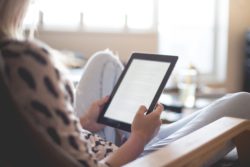What We’re Reading: March 27, 2020

Photo Credit: Pexels cc
March 13th- March 27th
App Development: Nextdoor, an app that amongst many things has been known as a space for neighbors to air grievances, is now becoming a way for neighbors to help each other without risking physical contact during the COVID-19 outbreak. John Herman highlights some particularly heart-warming uses of the app in New York City. (New York Times)
Civic Engagement: Hollie Russon Gilman, a fellow at New America’s Political Reform program and Columbia World Projects, prompts us to consider what we can do to keep our civic body healthy during a time of social isolation. (Stanford Social Innovation Review)
Data Crusaders: Emily Sohn follows the intensive effort amongst journalists and data scientists to track the spread of coronavirus state-by-state in what has become the COVID Tracking Project. (Columbia Journalism Review)
Data and Social Distancing: As more and more Americans are told to stay home and practice social distancing, Facebook’s mapping tools help researchers in California track whether or not the public actually follows such orders. (Protocol)
Government Transparency: Authors O’Malley, Rainford, and Thompson discuss how to define and codify transparency in order to encourage open public health communication during emergencies. (Bulletin of the World Health Organization)
Racial-Bias in Technology: A recently-published study found that in five major commercial speech-recognition systems, there are significant racial disparities in those systems’ understanding of users’ speech. (New York Times)
Working from Home: New to working from home? Here are some tips to look your best on your video-calls. (New York Times)
Please note that some of these articles reference COVID-19, but that as a rapidly evolving situation, they may not present the most up-to-date statistics.

